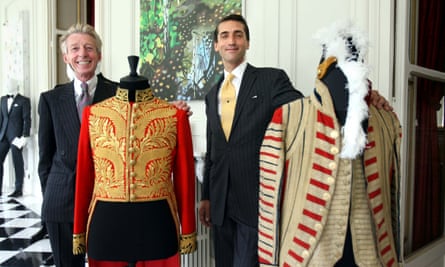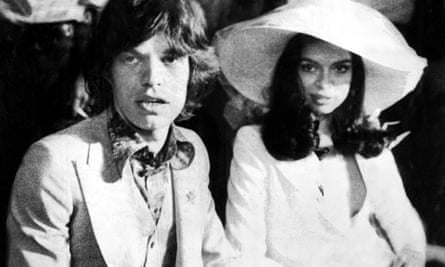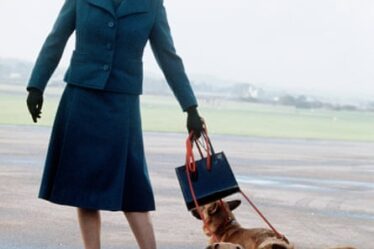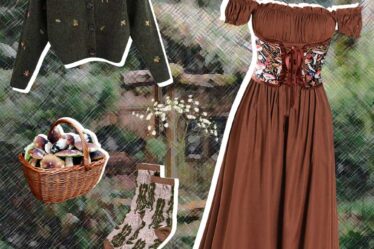
The customers of Edward Sexton, who has died aged 80, knew exactly what they wanted – and would get – from him over 54 years of tailoring: a long-bodied suit, with extravagant but never vulgar lapels, that illusioned away defects in the shoulders but did not beef them up, was springy down the spine and made the most of a youthful waist, if available.
Sexton trousers waxed and waned in width according to the times, but never absurdly – you would not want to alter by a centimetre the perfect proportions of the suit pants that the Beatles John, Ringo and Paul wore for their impromptu album-cover photo striding over the Abbey Road zebra crossing in 1969.
That was the year the Sexton suit came into its own on its rightful premises, which were not among the young-male-gear boutiques down Kings Road. He had enjoyed the wild fun to be had in those, and appreciated the inventiveness of their garments, but not their hit-and-miss fit, and barely tacked together iffy fabrics. That offended Sexton. Tailoring was his vocation, and it meant to him the millimetric measuring, cutting and hand-sewing of Savile Row.
So he went into partnership with the salesman and designer Tommy Nutter, and with finance from Cilla Black and the Beatles management man Peter Brown, who was Nutter’s lover, they rented No 35a Savile Row, opening on Valentine’s Day, 1969.
Nutter had the more memorable surname (hence the new business’s signboard – Nutter’s of Savile Row), a wider social circle, unbounded charm and a gift for publicity-generating mischief. Sexton and Nutter in gleeful cooperation brought the cool boutiques’ attitude to Savile Row.
Their firm’s welcoming front door had empty champagne bottles hanging on red ribbons to use as a knocker, and potential customers needed no discreet personal or family introductions to gain admission to the premises. There was a proper glass shop window displaying actual garments, always wild. Inside, clothes were draped over dustbins, slung over chairs. There might be stuffed rats in tuxedos, or mad games. Nutter’s was a party for customers eager to spend money earned mostly in creative industries on sexy outfits crafted with traditional skills.

The skills and the eye – an inner vision of ideal shapes – were Sexton’s. He and Nutter shared a nostalgia for the almost feminine curves of 1930s and early 40s tailoring – double-breasted cuts, voluptuous lapels – which Sexton incorporated into his core form. This looked glamorous though never languid on men moving with their music on stage, whatever their age and shape: Elton John, Eric Clapton and Paul McCartney spreading over half a century, Jarvis Cocker narrower than ever on his recent return, Rick Astley bounding in dusty pink across this summer’s Glastonbury. There was always room to rock in a Sexton suit’s knees and thighs. David Hockney wears Sexton, too, the suits complementing the artworks.
The Sexton cut also worked well on women. Mid-60s Paris-originated “trouser suits” for women had been designed flat on paper, like pastiches of masculinity for models with no subcutaneous fat. But Sexton’s undulating line flattered a wide female range – Twiggy, Yoko Ono, Annie Lennox. Sexton created Mick Jagger’s pale three-piece for his 1971 marriage to Bianca, and many even better suits for her after.
His recent sorbet-coloured suits for Harry Styles updated all streams of fluidity. Sexton was always pleased that he let women shop and work in Savile Row, and had arranged an internship there for McCartney’s fashion student daughter Stella so she could prove her seriousness about needle and cloth. Later, when she took over Chloé in Paris, she invited him there to help her tailor, but in delicate female textiles.
The Row had been in his life a long time. Born in Dagenham, then in Essex, the fourth of six children of Isabelle (nee Pitt), an office cleaner, and William Sexton, a public health inspector, Edward was brought up in Elephant and Castle, south-east London, and went to English Martyrs school in Southwark. By 12, however, he was already odd-jobbing for his uncle’s tailoring workshop, longing for the day he would move up from wearing shorts to grey flannel trousers, which he could reshape drainpipe tight like the revived hourglass Edwardian silhouette adopted by the teddy boys.
He worked part-time with a small West End tailor, then post-school as a waiter at the Waldorf hotel, where he tasted a little of a life of style. His father advised him to learn a skill and become his own master, so he found a job through Tailor and Cutter magazine as a bespoke trimmer, finishing suits at Harry Hall in Regent Street while studying at Barrett Street technical college; he then moved to the celebrity tailor Cyril Castle.
Then he cracked his ambition, an apprenticeship at Kilgour, French & Stanbury, in Savile Row, where he learned to cut from Fred Stanbury himself. Sexton was neat, spry and natty in his carefully collected bespoke wardrobe, with a pre-estuarine Cockney accent that brought him up against immovable snobbery on the Row. He learned not to care. The voice stayed as it was, gravelled by time. He kept a touch of punk about his hair.
At 24, he was appointed cutter at Donaldson, Williams & Ward, where he met the front-of-house Nutter in the firm’s Burlington Arcade showroom; Sexton already had his own private clients and workroom in Soho. Their bold Row venture, the first new firm there in a century, lasted until Sexton, with a sober sense of business, bought out the hedonistic Nutter and became managing director in 1976.
As Row rents rose, he moved in 1990 to a workshop in Beauchamp Place, Knightsbridge, where he accrued all the clients he could possibly outfit. The Pollen Estate, which owns part of Savile Row, and wanted to invest in its original craft identity, enticed Sexton back in 2020, to a handsome store a few doors and a social revolution away from Nutters. He said on his triumphant return: “I don’t think I’ve ever really ‘worked’ a day in my life because it’s been such a joy … It’s not a job, it’s a passion.”
He married Joan Carter in 1963. She and their children, Angela, Paul and Philip, survive him.



